The Steam Map
We can all agree that video games are an art form. Each game is a mix of visual flair, storytelling, engaging soundtracks, and technical wizardry. It’s this unlimited scope for creativity that makes games so hard to define when we’re researching what is out there and what we should be building as developers.
The current approach of simply labelling games by their genres, themes, and visual perspectives is too shallow to capture the diversity of the gaming ecosystem. Worse still, analysing the market using these labels can be horrendously misleading and makes identifying underserved audiences particularly difficult.
This is why we built the Steam Map.
The Steam Map is a large mathematical model that describes the similarity between games. It pulls in all the data from a game’s Steam page including tags, genres, labels, descriptions, and even images because we’re dealing with artwork here, not just software!
In the Steam Map, every data point is a unique video game and the distance between points shows how similar two games are. Where the game appears on the map depends on more than just genres and user defined tags, it’s also influenced by the game’s description and visual style from the gameplay images.
If the points are far apart, it means the games don’t have much in common in terms of visual style and gameplay description. On the other hand, points that are close together indicate games with similar features, art styles, and gameplay.
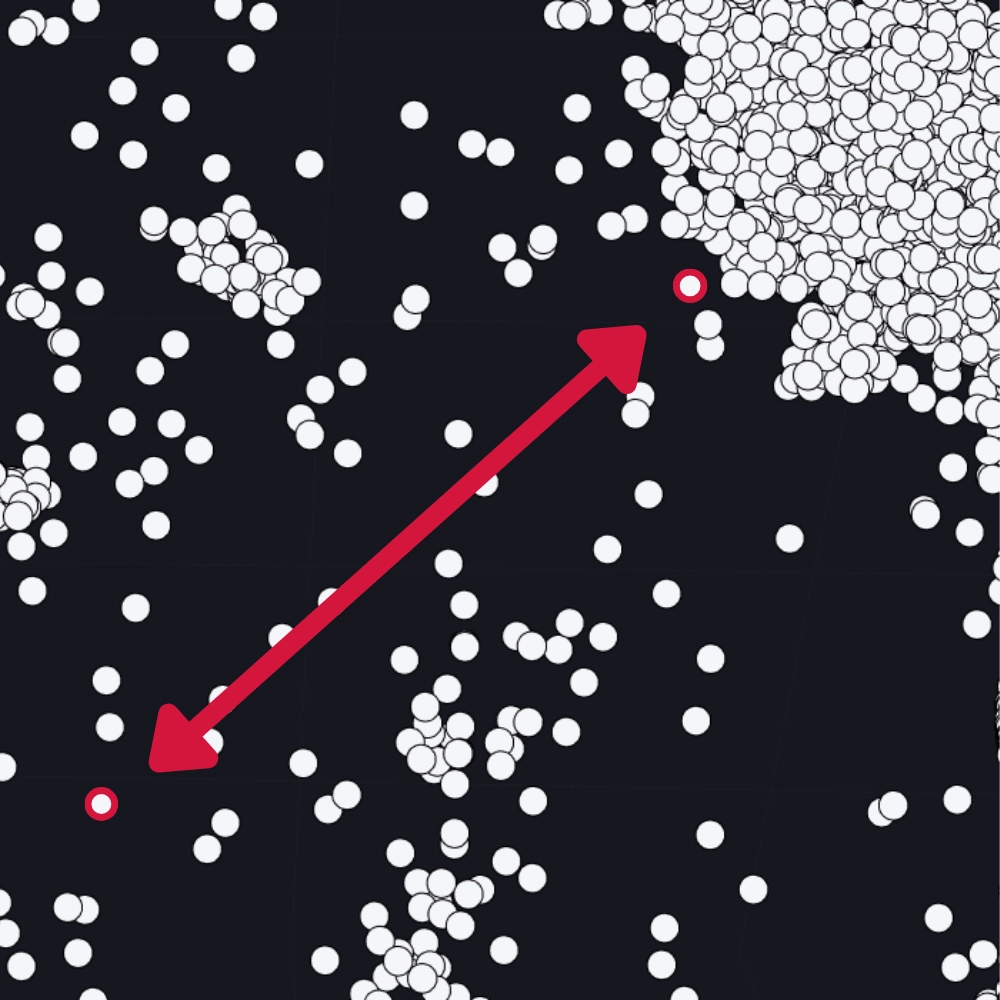
The real strength of the Steam Map is its ability to measure the similarity between games. This lets us uncover patterns, identify the boundaries between genres, and most importantly, spot gaps in the market.
How You Can Use The Steam Map
Our Steam map is the engine behind all our research tools and powers state-of-the-art market analytics.
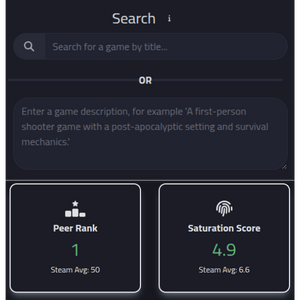
Data Explorer
Our full mathematical model can be used to search the marketplace with great precision and enables not only game comparison search but full description search; simply describe a game and the map can be used to find games most similar to your description.
The map is utilised to produce powerful, bespoke statistics that illuminate market saturation within the search results. It also helps you make meaningful comparisons of a game's performance by comparing the game's review statistics to direct competitors, as opposed to broad comparisons against games within the same general category.
Game Gap
More powerful than searching the market is the ability to identify undersaturated market segments where there is an abundance of opportunity for indie game developers.
We offer this in our Game Gap tool, where we cluster our map into market segments and classify those segments according to market saturation, player perception, historical demand, and the absence of large AAA titles.
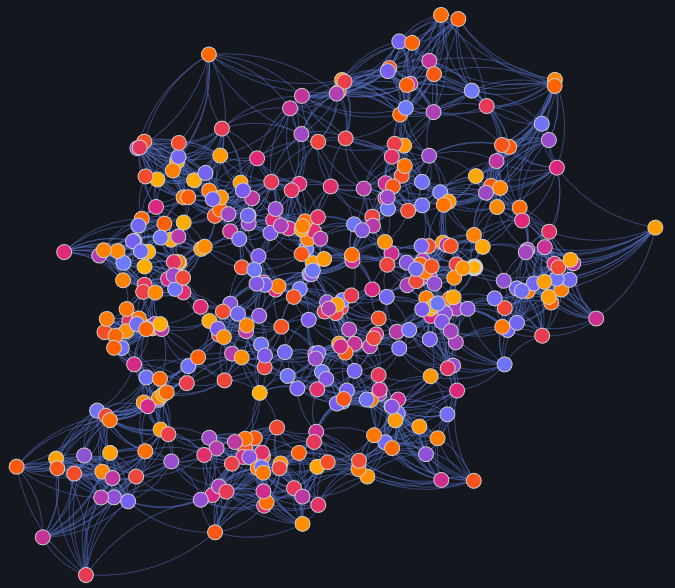
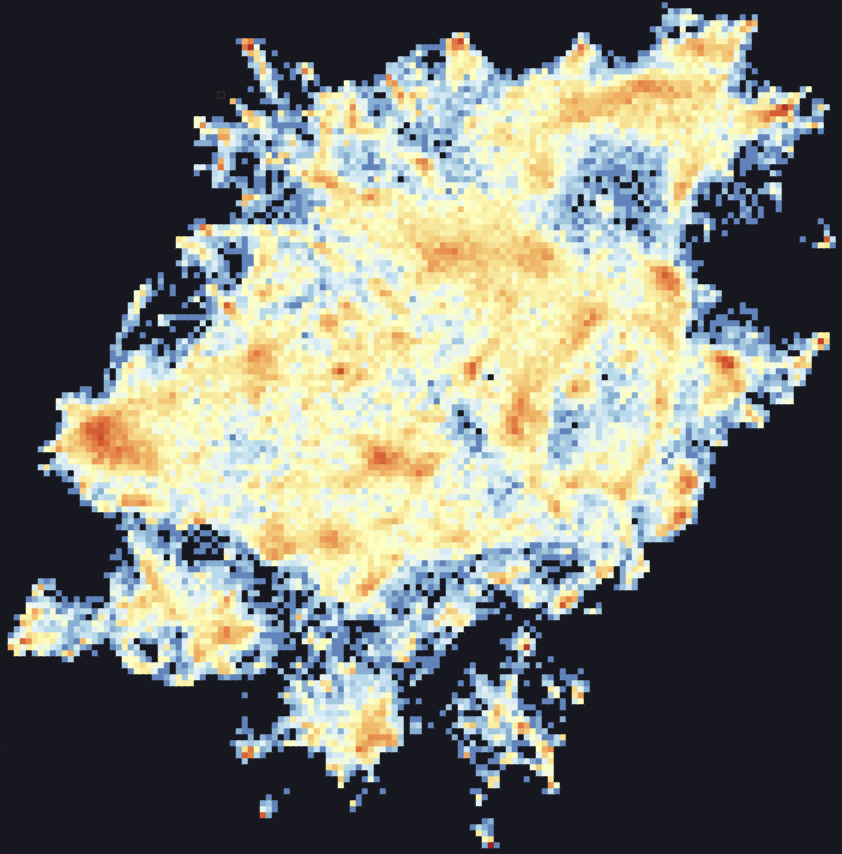
Saturation Map
The final powerful application of our map can be seen when we squeeze it down into 2D space and view the entire marketplace as a heatmap, which is exactly what we do in our Saturation Map tool.
The Saturation Map allows you to visualise and explore the entire Steam marketplace in one place. Each square contains games that are really similar to each other. The colour of the squares tells us how densely populated a region of the market is. Red squares are really saturated, whereas blue squares don’t contain many games at all and are what we would call unsaturated.
The point is, our Steam Map is behind everything we do here at Game Oracle. We believe that by understanding what makes game similar and correlating that information with player sentiment and commercial performance, we can unlock the key to what makes a game enjoyable for a particular audience.
Wait? Why Can't I Just Use Tags?
Imagine you're inspired by the success of games like Phasmophobia and you want to create an exciting horror game with online co-op and stunning 3D graphics. You want to get inspiration for mechanics that players love as well as find the games that already exist; your potential competition.
So, you head over to Steam and search for games with the tags: ‘3D’, ‘Horror’, and ‘Online Co-Op’. The search brings back 838 titles which we can visualise on a 3D projection of our Steam Map.
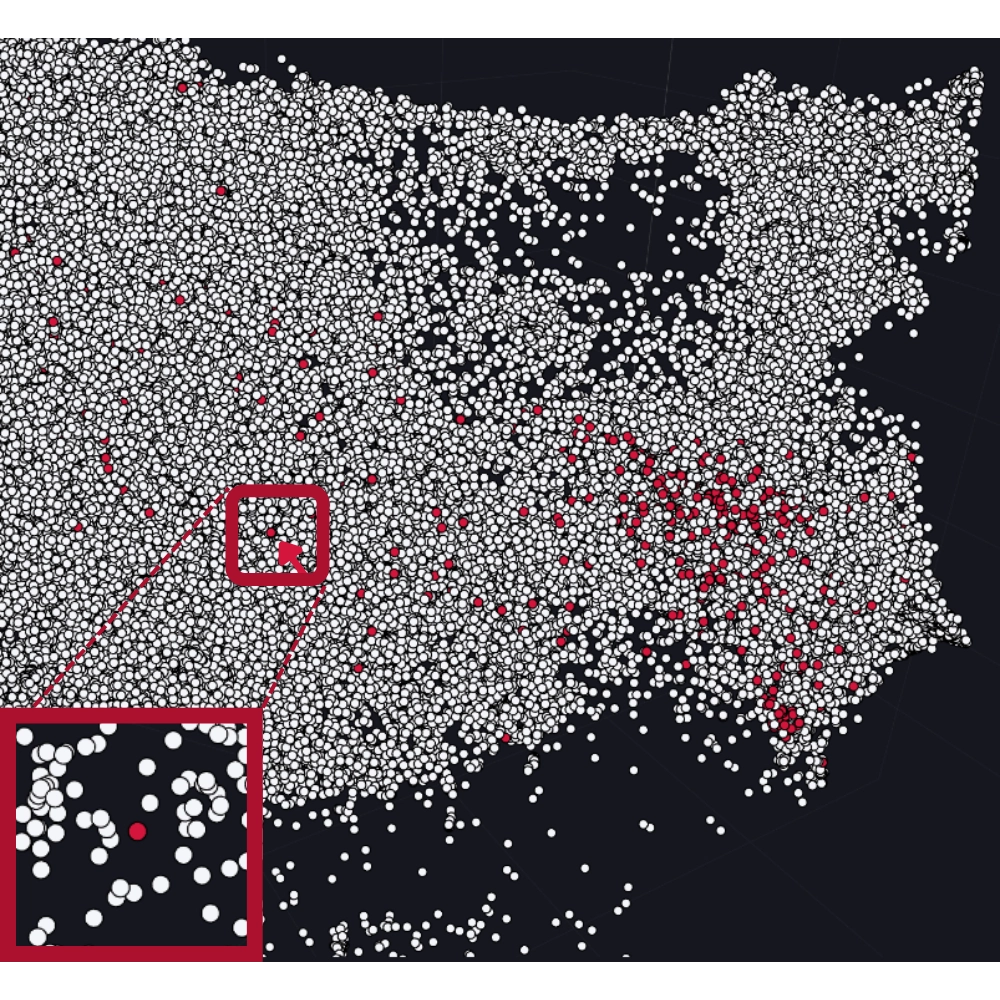
The red data points are games containing the tags ‘3D’, ‘Horror’, and ‘Online Co-Op’. The problem is immediately clear. In the main cluster (right-hand side of the image) we can see lots of games highlighted, but there are many games closer, and therefore similar to those highlighted that are not being captured by our selected tags. On the left-hand side of the image we see a separate splatter of games that are also tagged as ‘3D’, ‘Horror’, and ‘Online Co-Op’, and if we focus in on one of these ‘outliers’ we find a remarkable game called ‘King of Swords’.
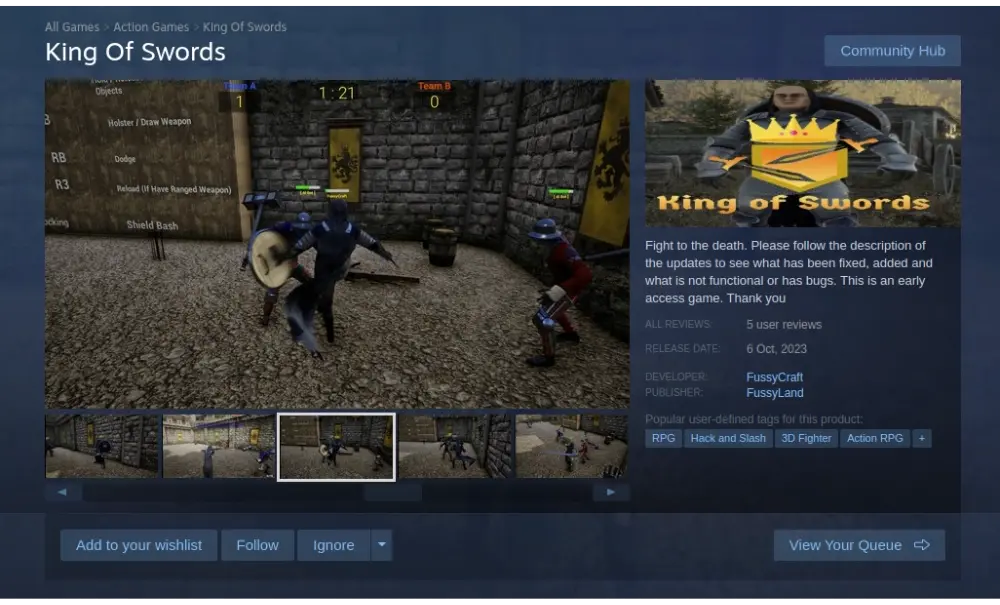
While King of Swords does look awesome (we definitely want to try it out), would it be the first game you’d think of when brainstorming ideas for a Phasmophobia-inspired game? Probably not. It also wouldn’t be very helpful for gauging performance and revenue estimates for games similar to Phasmophobia. Yet, it has been tagged ‘3D’, ‘Horror’, and ‘Online Co-Op’.
In this example, relying solely on tags and genres to research the game I’m interested in creating has left me with two blind spots. First, if I don’t meticulously examine every game in my search, my estimates for the number of releases, pricing, reviews, and revenue might be skewed by irrelevant titles like King of Swords. Second, and perhaps more importantly, my understanding of what similar games are available for this audience misses out on horror games that are not using the tags from my search.
Now let us consider an alternative approach.
Games And Their Similar 'Neighbours'
With the name of a game that inspires us and a map of the entire Steam catalogue at our fingertips, we can zero in on the ‘neighbourhood’ of games that closely resemble our inspirational title. The image below shows the 100 games most similar to Phasmophobia highlighted on our 3D projection of the Steam map. You can see by the examples we've pulled out that the games found here are truly similar to Phasmophobia.
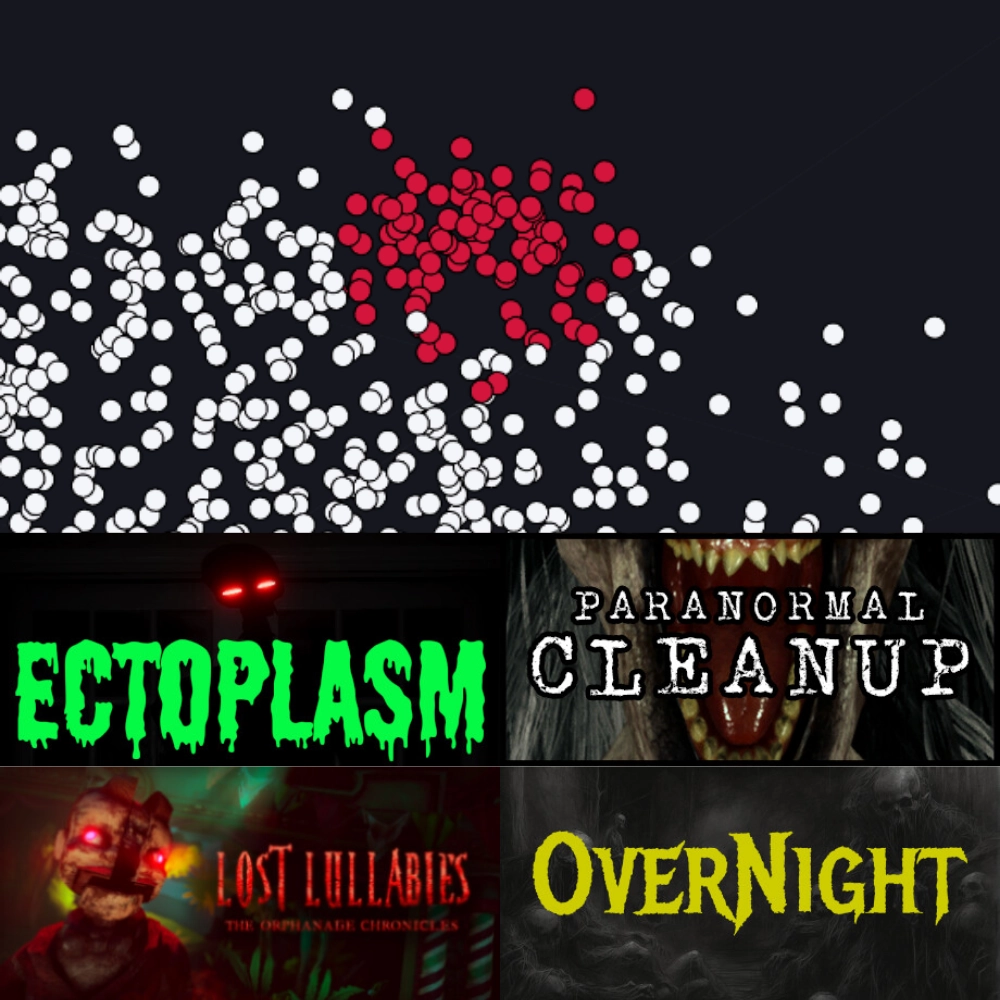
Our research tools let you discover games similar to your title of interest, ensuring that no stone is left unturned. With a cluster of games that are truly relevant to your project, you can start to get a clear picture of competitor pricing, the expected ratio of positive-to-negative reviews, and estimated revenue for the type of game you want to create.
More importantly, you can zoom in and ask, “What’s missing? What hasn’t anyone else thought of doing in this space?”
The Steam Map can reveal literal gaps in the gaming landscape, sparking inspiration for your next title.
Technical Bits
We already touched on the different versions of the map in our research tools, but let's get a bit more detailed. Behind the scenes the map exists in a few different forms. We have a very dense deep map that describes games in high-dimensional space and then some shallow versions of this map that have been squeezed down into fewer dimensions, the smallest being a 2D map.
Why reduce the dimensions of the Steam Map? Well it's very hard to visualise our very deep map...well actually it's impossible! We want to allow people to explore the marketplace visually in tools like Saturation Map and this means we need a 2D version. It is equally difficult to find reliable market segments in our deep map due to a problem called the "curse of dimensionality". So we also use a squashed version of the map to cluster similar games together into market segments (we use about 20 dimensions for this).
| Map Type | Where do we use this? | Advantages | Limitations |
| Deep | Data Explorer Steam Revenue Calculator Showing similar games on the details page of individual Steam titles | Extremely accurate search results | Impossible to visualise the topology of the market and the distance between games Search results can deteriorate when looking at very distant games in the high-dimensional space Difficult to create reliable clusters for market segments |
| Shallow | Saturation Map Game Gap | We can actually visualise and interact with the map Allows us to cluster games into market segments | The absolute similarity between pairs of games can be lost in exchange for broader 'clusters' of similar games |
What does this all really mean? Well, sometimes you will find what games are considered "similar" in Data Explorer differs from what is considered "similar" in Saturation Map and Game Gap, with the results from Data Explorer sometimes suggesting better matches. Unfortunately, this is the cost we pay for nice visualisations and practical market segments. We are working hard behind the scenes to improve how exactly we do our reduction of the map and we will continue to ship new and improved maps.
How do you decide if your Steam Map is a 'good' representation of the Steam marketplace?
We don't just rely on vibes here at Game Oracle, instead we try and approach the problem with strong scientific rigour to provide the most accurate insights for game developers. We've worked tirelessly to curate a dataset containing thousands of similar and dissimilar games. We've created what is known as "triplet" data, where we select an anchor game, a game very similar to that anchor known as the 'positive', and a game that is dissimilar known as the 'negative'. Take Overcooked for example, a good positive example would be PlateUp! whereas a negative would be Call of Duty: Modern Warfare. If our map is good, then Overcooked should be very closed to PlateUp! but very far away from Call of Duty: Modern Warfare.
We have used a combination of user-defined tags, common franchises, and manual labelling to create a dataset of over 100k pairs of anchor-positive-negative triplets. We use this data to improve our map, but we can also use the dataset to assess how well the map is performing. The plot below shows how our shallow map performs across three different subsets of our triplet data (as of May 2025):

There is a lot to digest in the graphs above! The top three histograms show the distribution of distances between the anchor and the positive (blue) and the anchor and the negative (orange). If the model is doing a good job then the positive distances should be close to zero (because the positives are similar to the anchor) and the distribution of the negative distances should be shifted to the right.
The bottom three histograms show the distribution of differences between the anchor-positive distance and the anchor-negative distance. If the map was perfect, we would expect the entire distribution to be on the right hand side of the red dotted line. As you can see, for most triplets, the Steam Map currently does a good job of differentiating negative and positive pairs. One of our missions it to make the Steam Map as accurate as possible. Over time we're going to work hard to shift those distributions further and further to the right to provide the most reliable description of Steam you will ever find.
So that is our Steam Map, we hope you find it as exciting as we do. We really believe it could open up a lot of opportunities for game development.
Our Products
Dive into the data yourself with our research tools for unrestricted market research.
- -Our Steam Map allows you to find and analyse games with similar art style and mechanics
- -Analyse market saturation and performance in one glance with our bespoke statistical scores
- -Access to our Deep Dive statistical analysis reports for exclusive game industry insights